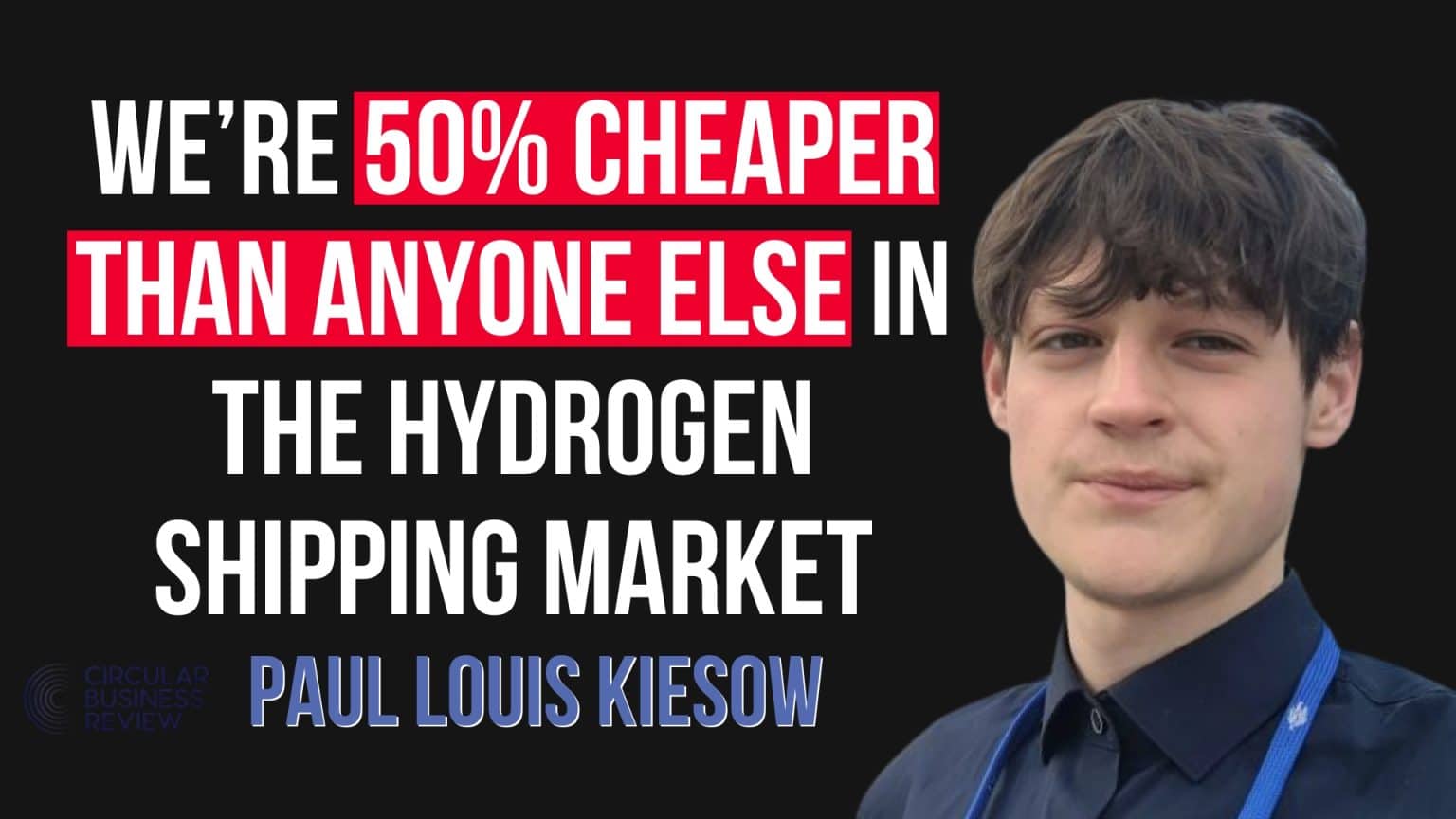The global transportation liquid hydrogen market is projected to reach $10 billion by 2032, growing at a 21.44% CAGR, creating an opportunity that Paul Louis Kiesow believes justifies his ambitious entry strategy. At 20, the CEO’s €10 million Qatari-backed venture proposes 60,000 cubic meter hydrogen tankers—vessels that would dwarf current capabilities yet remain modest compared to those of established competitors.
WATCH THE FULL INTERVIEW HERE
Scale Disparity Reveals Strategic Positioning
Kiesow’s proposed ship capacity positions his venture between current demonstration vessels and the ambitions of industry leaders. Kawasaki’s pioneering SUISO FRONTIER operates with a 1,250 cubic meter tank, while the company has developed plans for 160,000 cubic meter carriers with four 40,000 cubic meter tanks. However, Kawasaki recently scaled back these plans by 75% due to lower-than-expected demand for international liquid hydrogen transportation.
This market reality challenges Kiesow’s scaling assumptions. His 60,000 cubic meter proposal—48 times larger than Kawasaki’s operational vessel but 2.7 times smaller than their original large-scale design—suggests either conservative market entry or recognition of demand constraints that even established players acknowledge.
Transport Economics Under Scrutiny
Kiesow’s claimed transport costs of €2 per kilogram face market realities that suggest higher figures. Academic research indicates liquid hydrogen transportation costs of $3.24 per gigajoule, while liquid ammonia alternatives cost $1.09 per gigajoule. These figures highlight the economic challenge facing liquid hydrogen as a transport medium, contradicting Kiesow’s efficiency claims.
The startup’s 3% cargo loss during 30-day voyages, while manageable through ship propulsion use, represents significant value erosion at scale. For a 60,000 cubic meter cargo worth approximately €120 million at current market prices, 3% losses equal €3.6 million per voyage—costs that must be absorbed within the €2 per kilogram transport pricing.
Technical Innovation Claims Require Validation
Kiesow’s assertion that NASA-inspired tank technology enables cost reductions lacks specificity regarding actual innovations. Kawasaki’s established CCS technology already incorporates advanced structural dimensions and insulation systems for large-scale carriers. Without detailed technical differentiation, the startup’s competitive advantage remains unclear against incumbents with proven maritime hydrogen experience.
The safety argument comparing hydrogen to conventional fuels oversimplifies risk assessment. While hydrogen’s lighter-than-air properties differ from hydrocarbon explosion risks, maritime transport involves confined spaces, complex loading operations, and emergency response challenges that require comprehensive safety systems beyond basic venting procedures.
Market Timing and Infrastructure Dependencies
Europe’s transportation liquid hydrogen market is expanding at 6.5% CAGR through 2032, indicating steady but not explosive growth. This moderate expansion rate questions whether demand will justify Kiesow’s 2029 ship delivery timeline, particularly given established competitors’ recent capacity reductions.
The startup’s plan to develop integrated infrastructure from Middle Eastern production to European delivery addresses supply chain completeness but requires capital deployment across multiple project phases. The broader hydrogen storage and transportation market, growing from $950.9 million in 2023 to $5.3 billion by 2033, provides context forthe total available market, but segment-specific demand remains uncertain.
Regional Competition Analysis
Middle Eastern hydrogen production advantages—solar resources, available land, and energy project experience—align with regional development strategies. However, North African, Chilean, and Australian competitors offer similar renewable energy potential with established industrial relationships. Kiesow’s regional focus may limit geographic diversification needed for market resilience.
The GCC and Asian shipyard strategy addresses the cost constraints European yards impose, but introduces supply chain complexity and potential quality control challenges. Ship construction partnerships require substantial technical transfer and oversight capabilities that startups typically lack compared to integrated industrial groups.
Financial Structure and Exit Strategy Clarity
€10 million initial funding appears insufficient for developing, constructing, and operating 60,000 cubic meter hydrogen tankers estimated at €200 million each. The financing gap suggests either staged development plans or the expectation of significant additional capital raising rounds. Current funding likely covers design development and partnership establishment rather than vessel construction.
The startup’s backup plan of licensing technology to established oil, gas, or shipping companies indicates recognition that independent operations may prove financially unviable. This strategic flexibility suggests a realistic assessment of market entry challenges while maintaining a technology development focus.
Competitive Positioning Against Industry Giants
Competition with Shell and Kawasaki requires differentiation beyond cost claims. Established players possess integrated supply chains, regulatory relationships, and operational expertise that startups must overcome through superior technology or market positioning. Kiesow’s partnership with a 58-year-old co-founder addresses experience gaps but doesn’t eliminate operational scale disadvantages.
The startup’s technology-focused approach may enable partnership opportunities with established players seeking innovation rather than direct competition. Maritime hydrogen transport requires substantial regulatory approval processes where incumbent relationships provide significant advantages over new market entrants.
Market Development Timeline Realities
Infrastructure development cycles for hydrogen economy establishment typically extend beyond individual company timelines. While government support can accelerate development, commercial viability depends on coordinated investment across production, transport, and utilization segments. The startup’s success relies heavily on broader market development rather than company-specific execution.
Current ammonia shipping represents less than 15% of the global ammonia market at 20 million tons annually, illustrating how even established alternative fuel shipping remains niche. Hydrogen transport faces similar adoption challenges despite the theoretical advantages Kiesow emphasizes.





